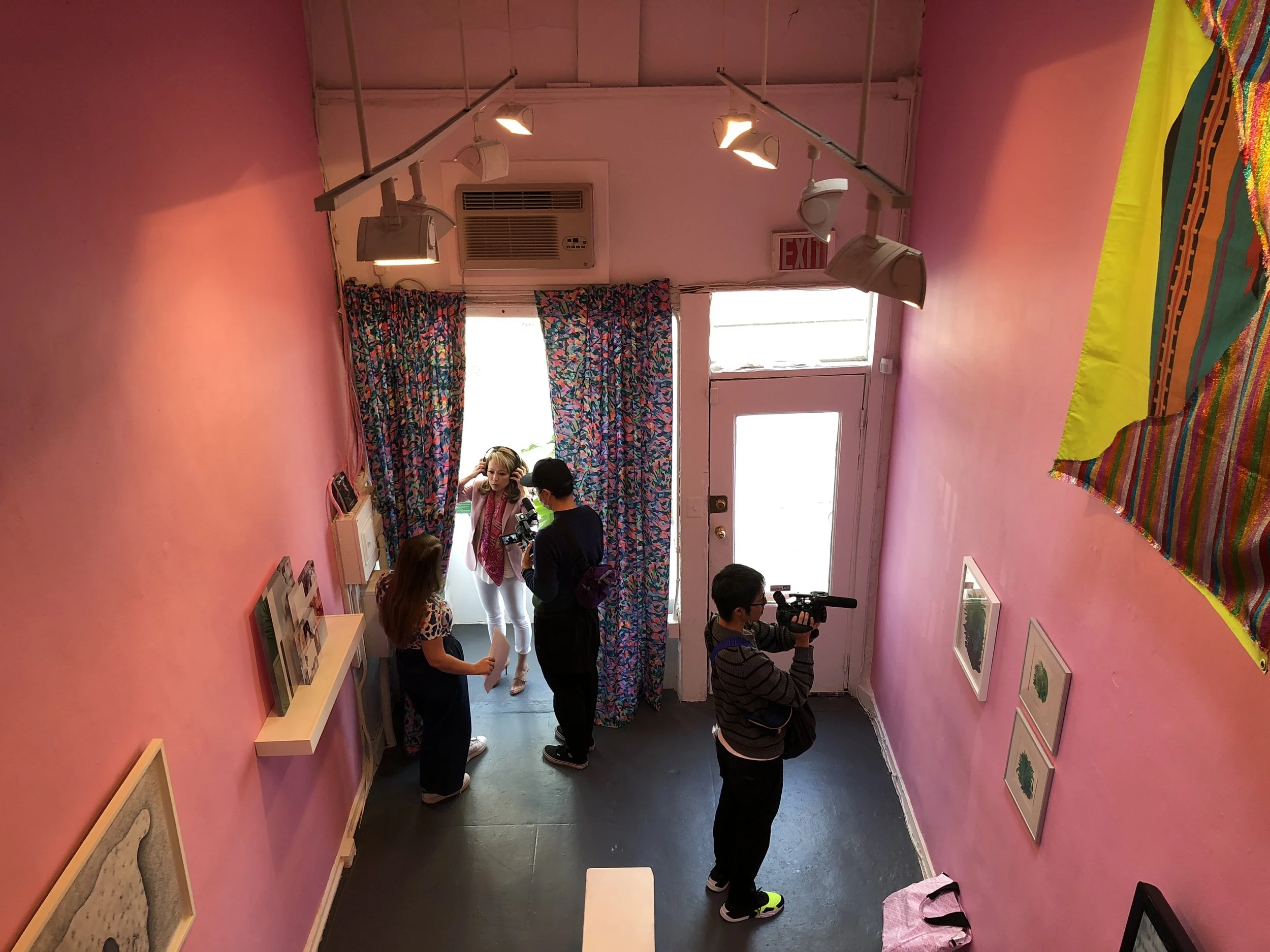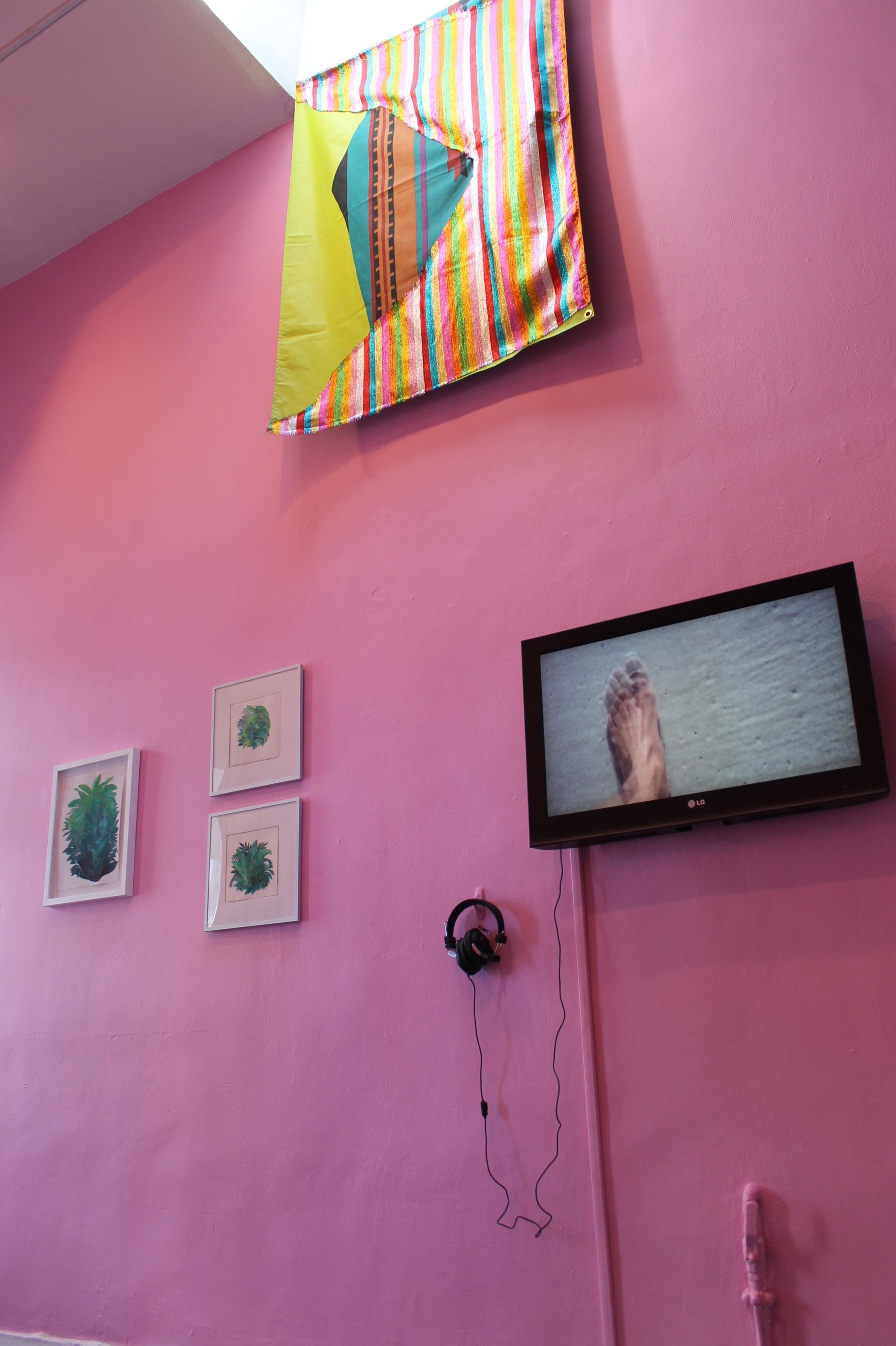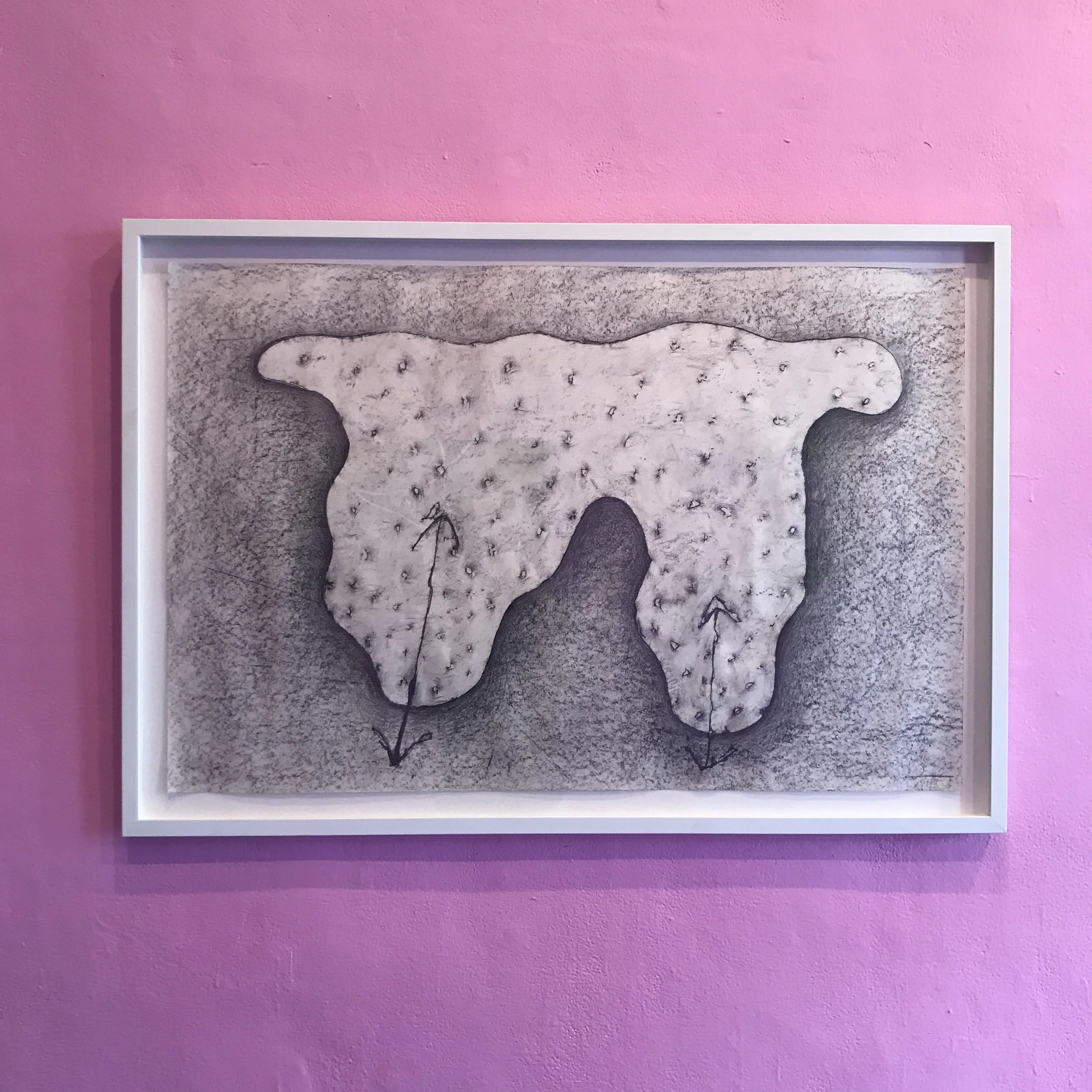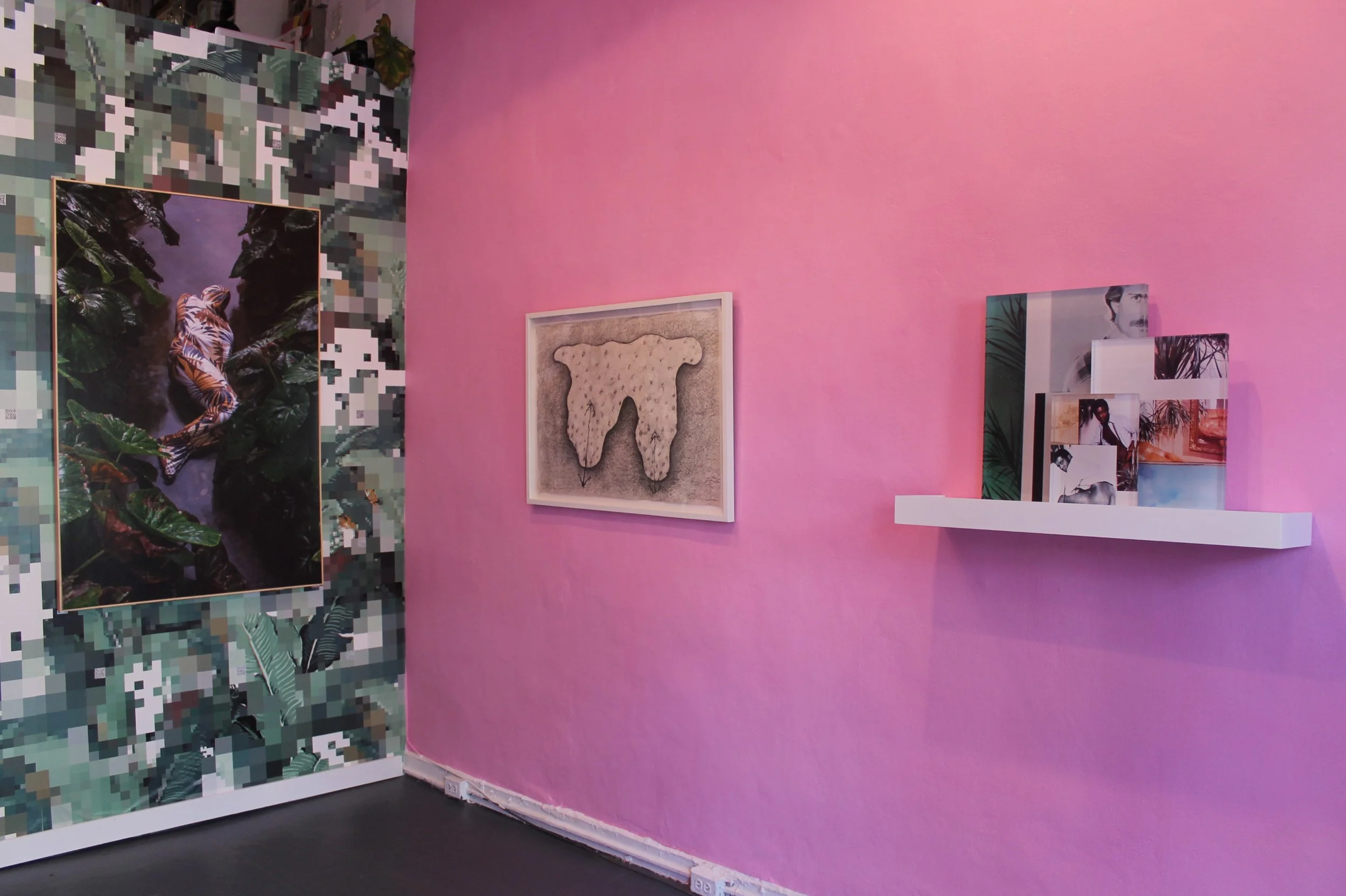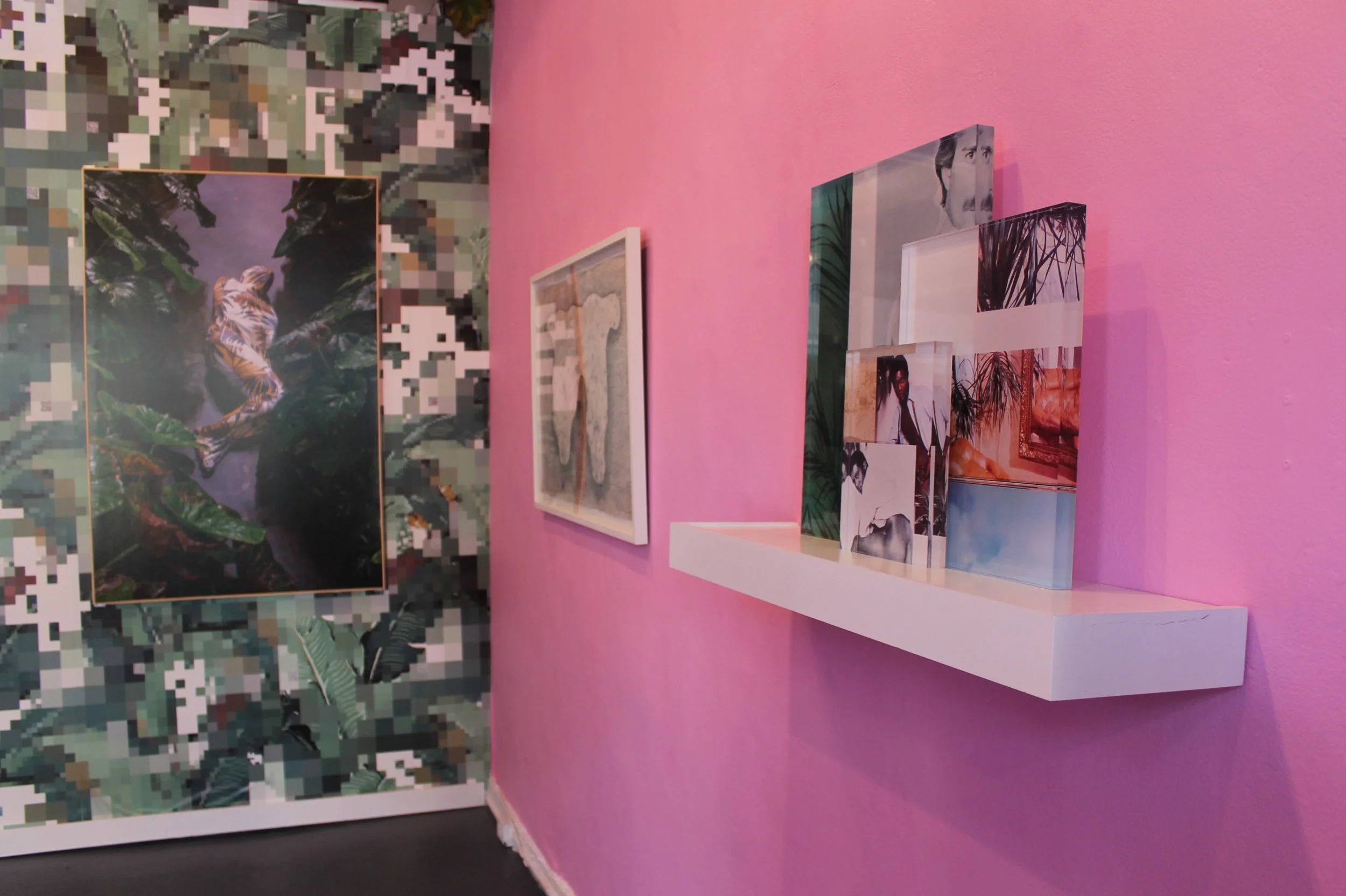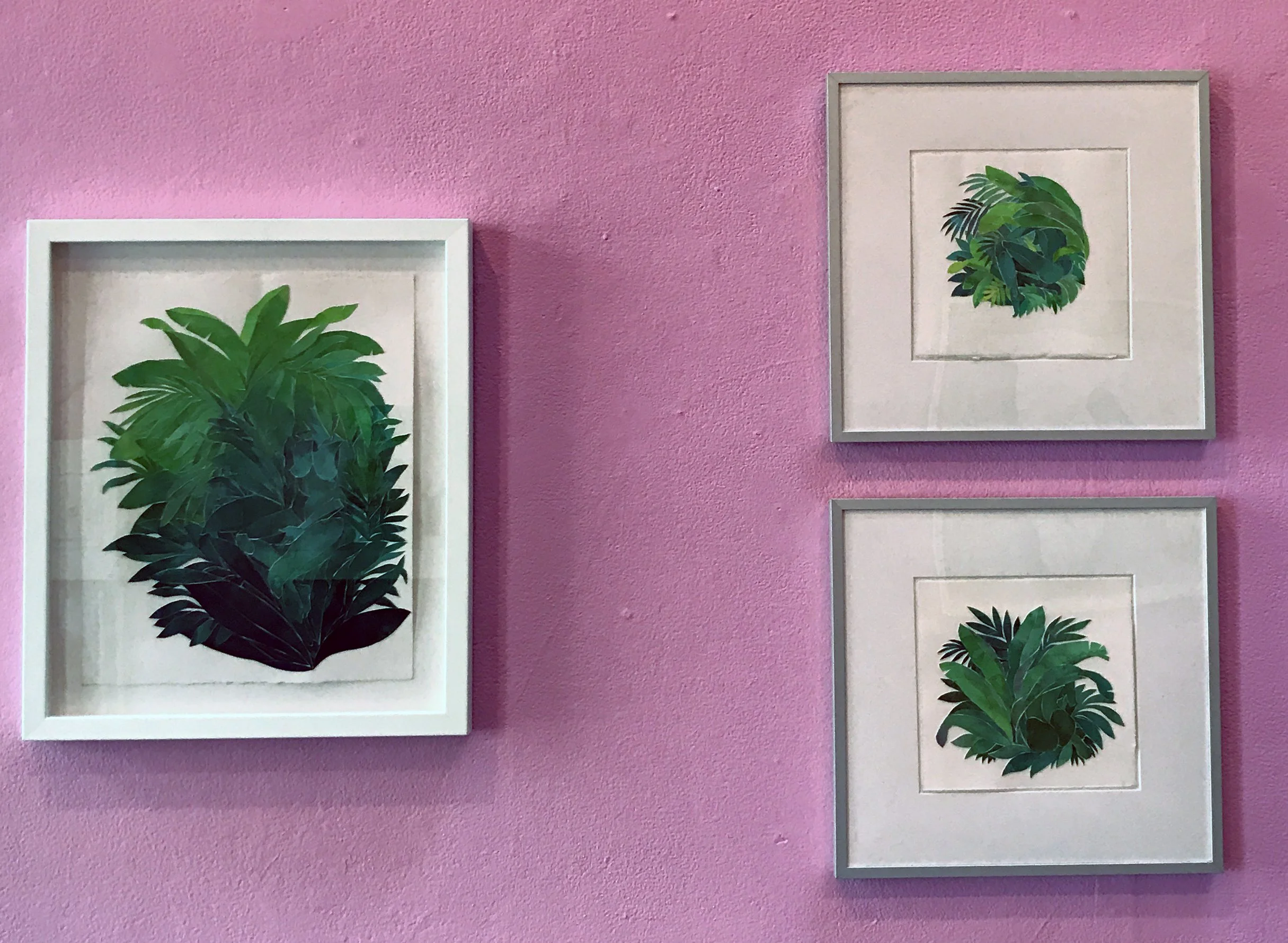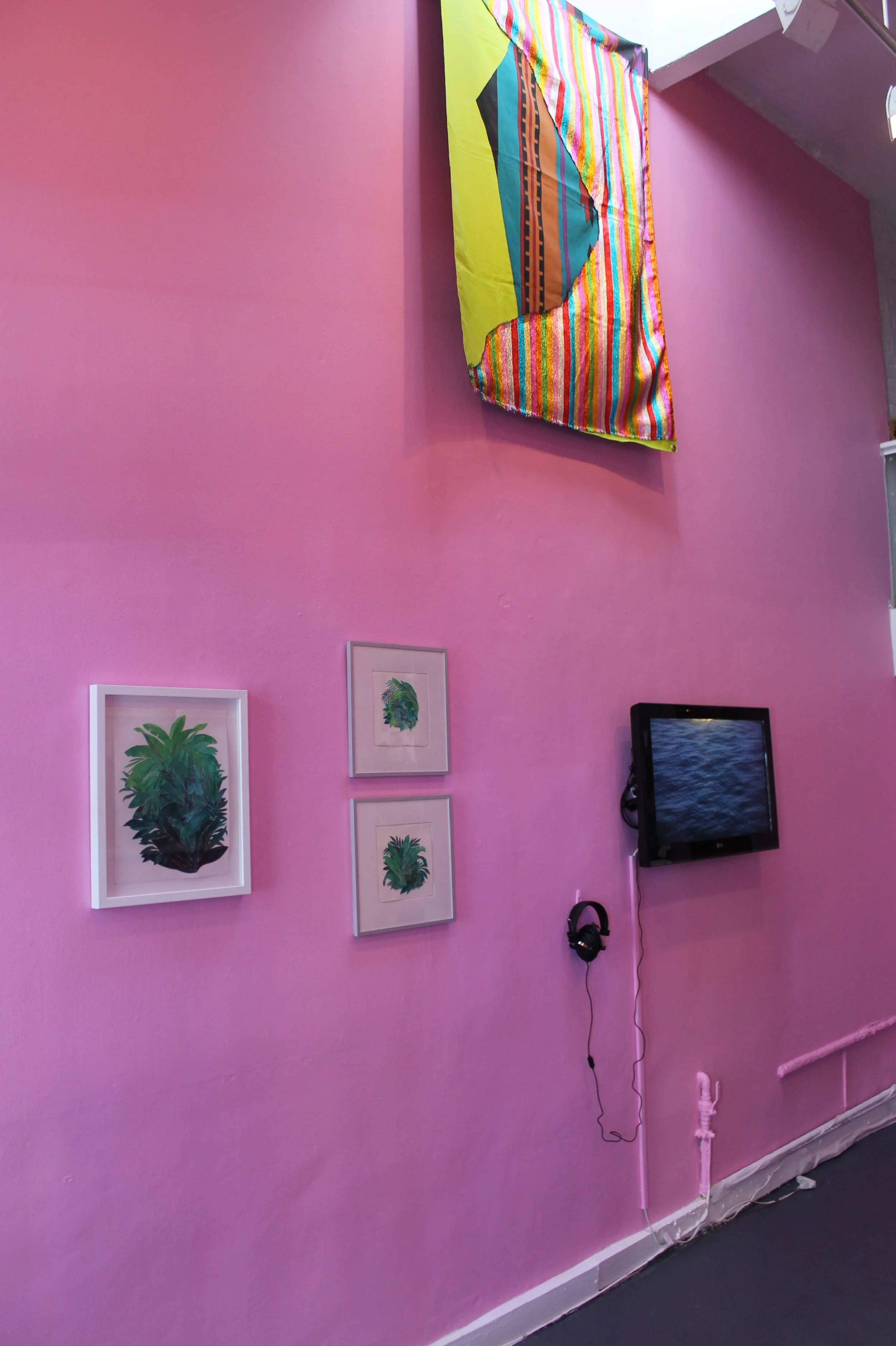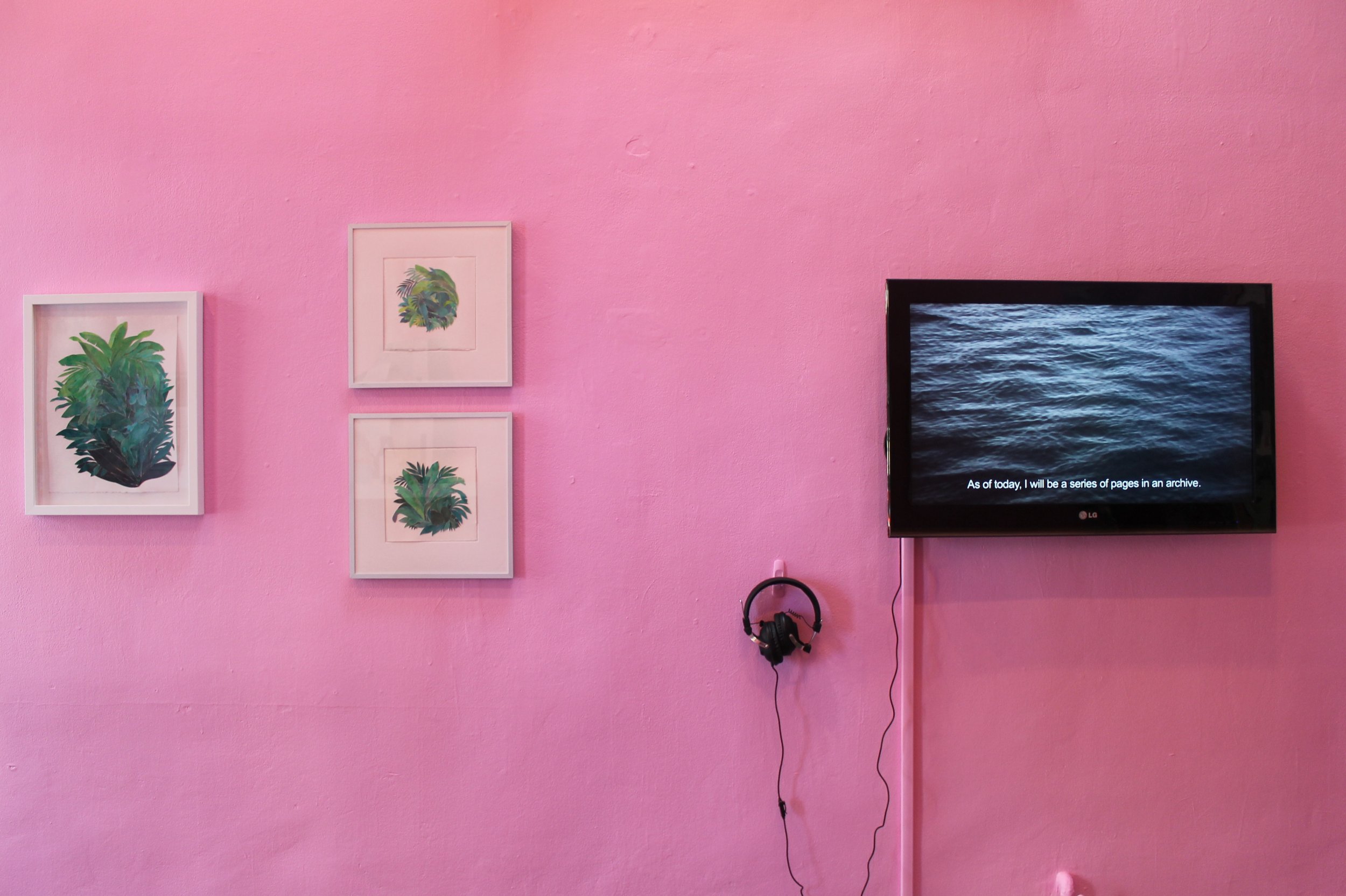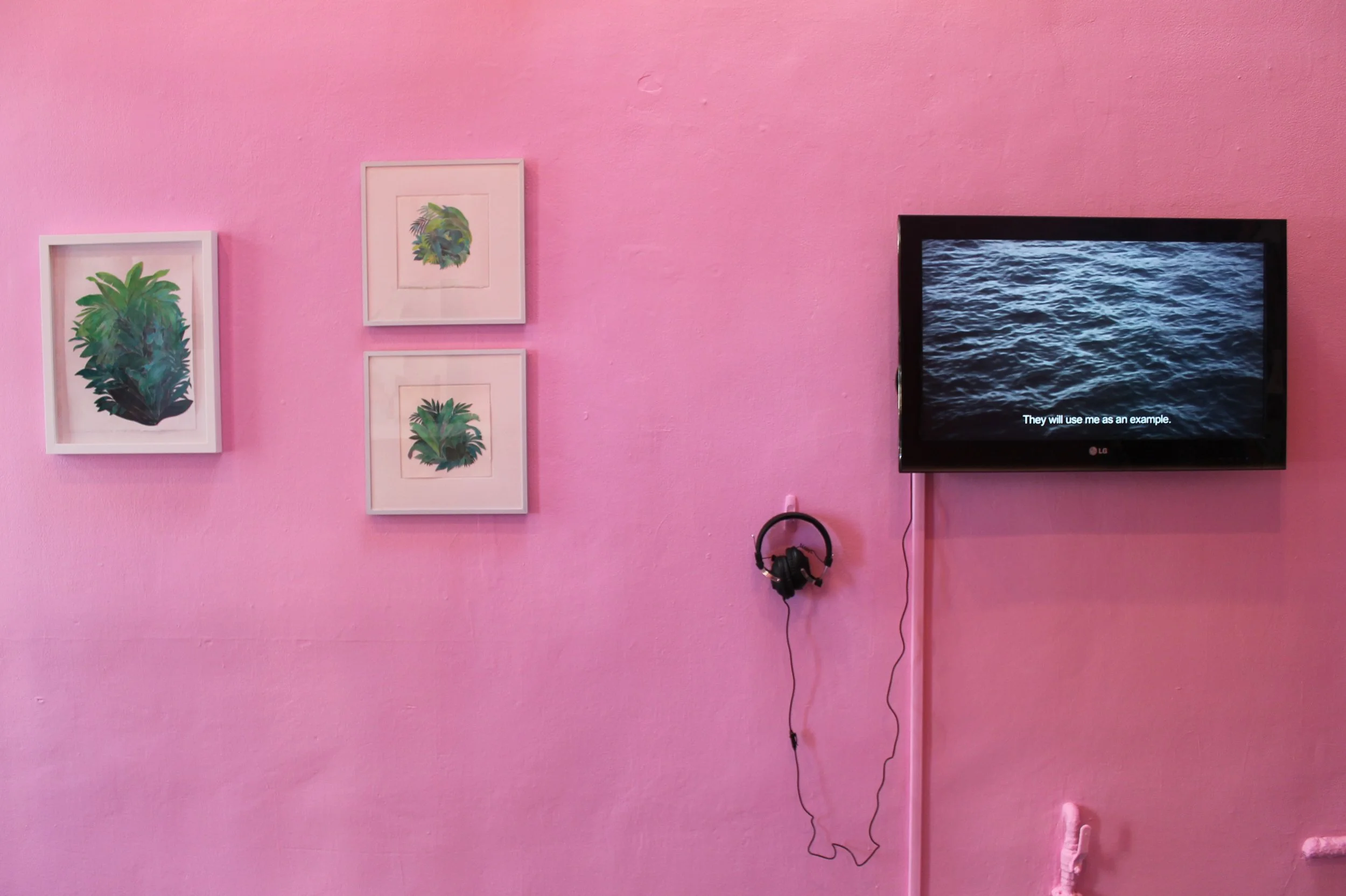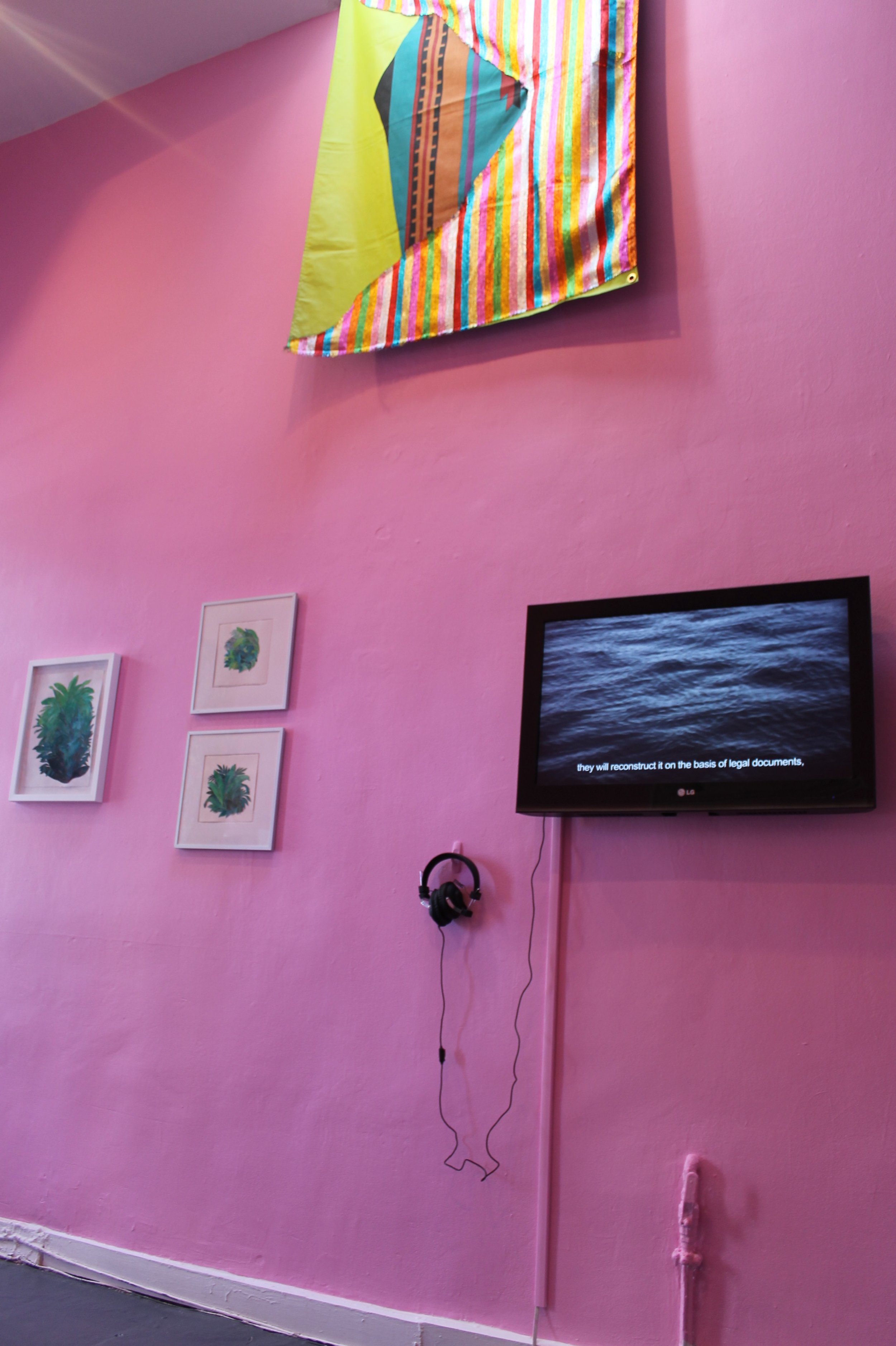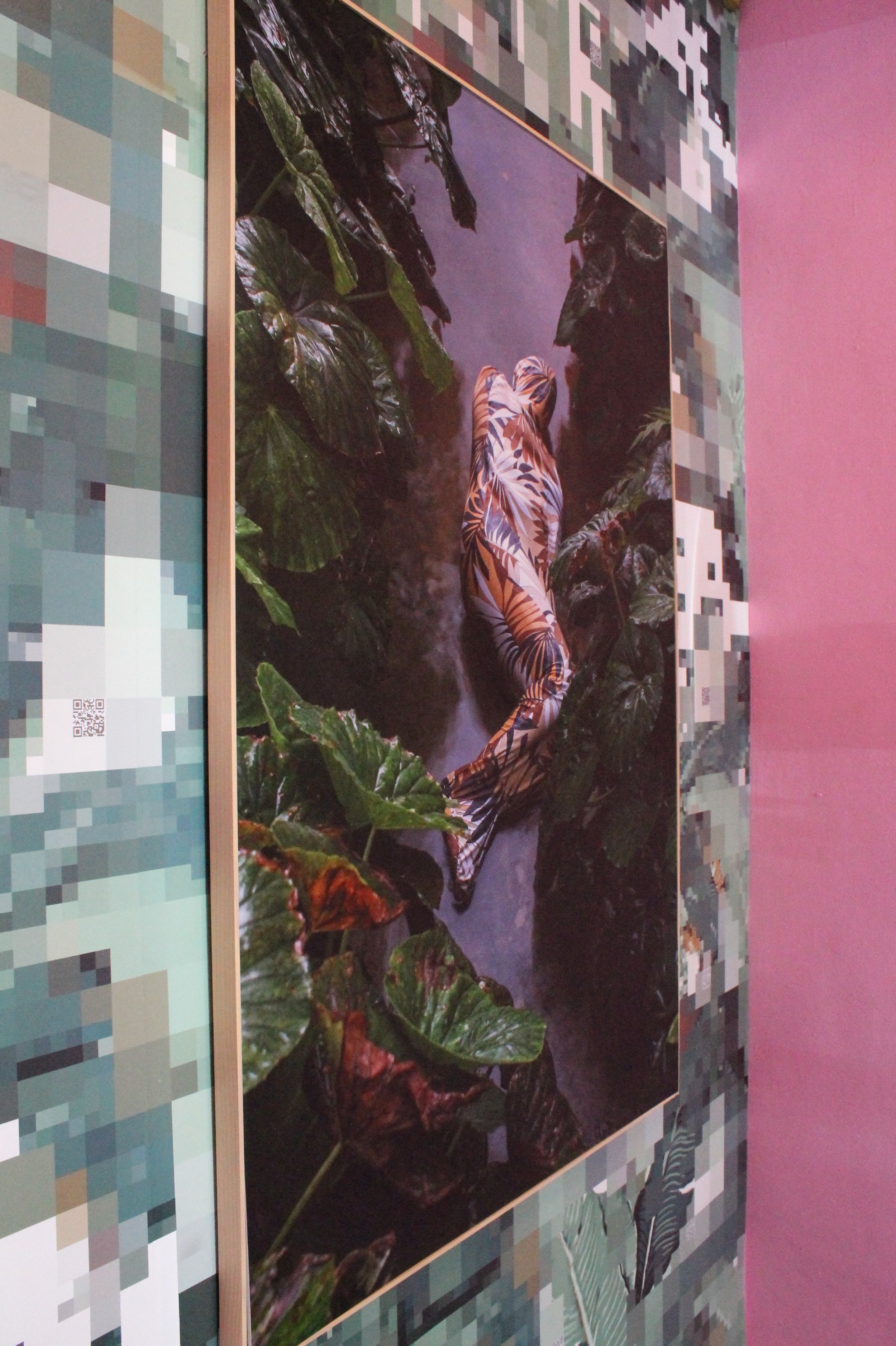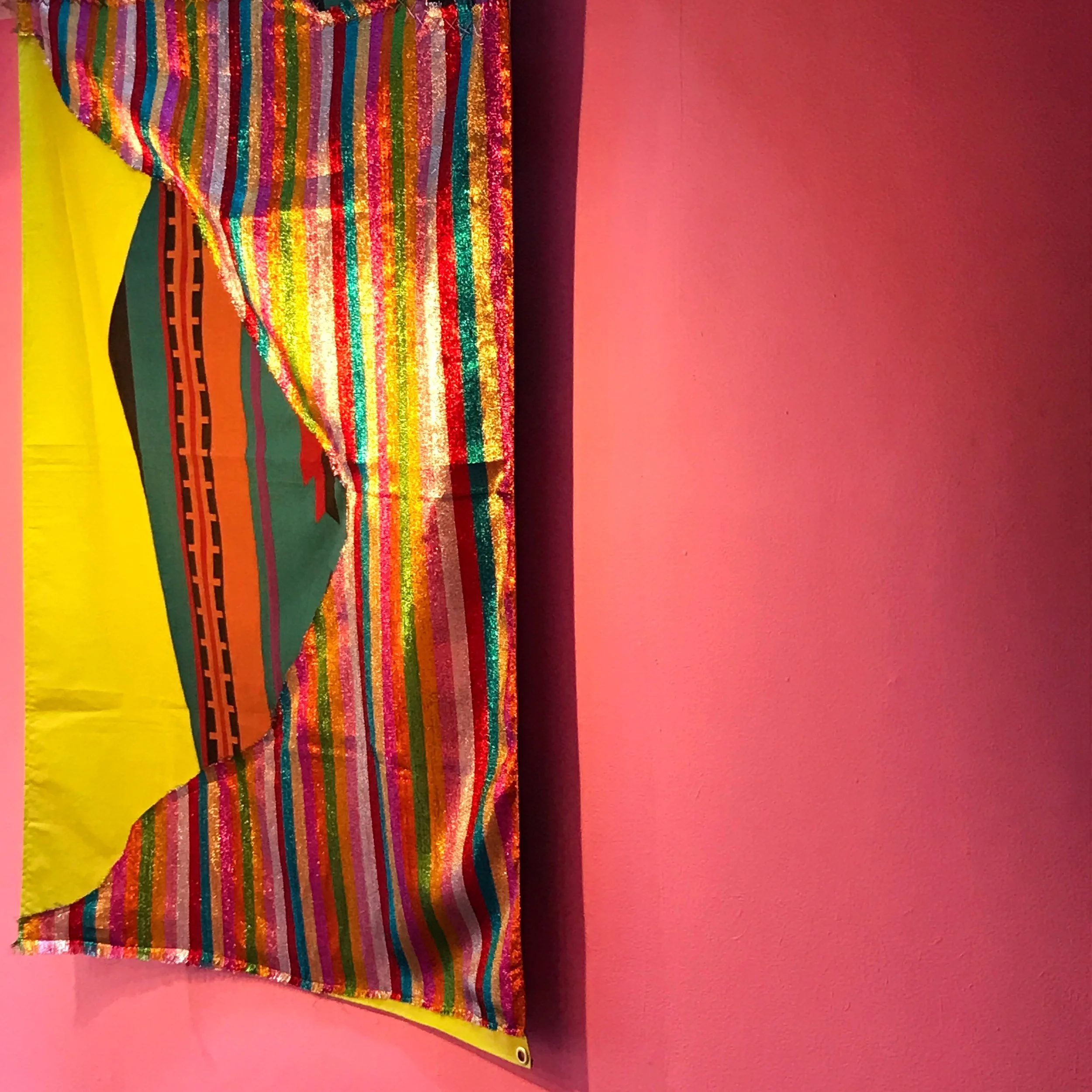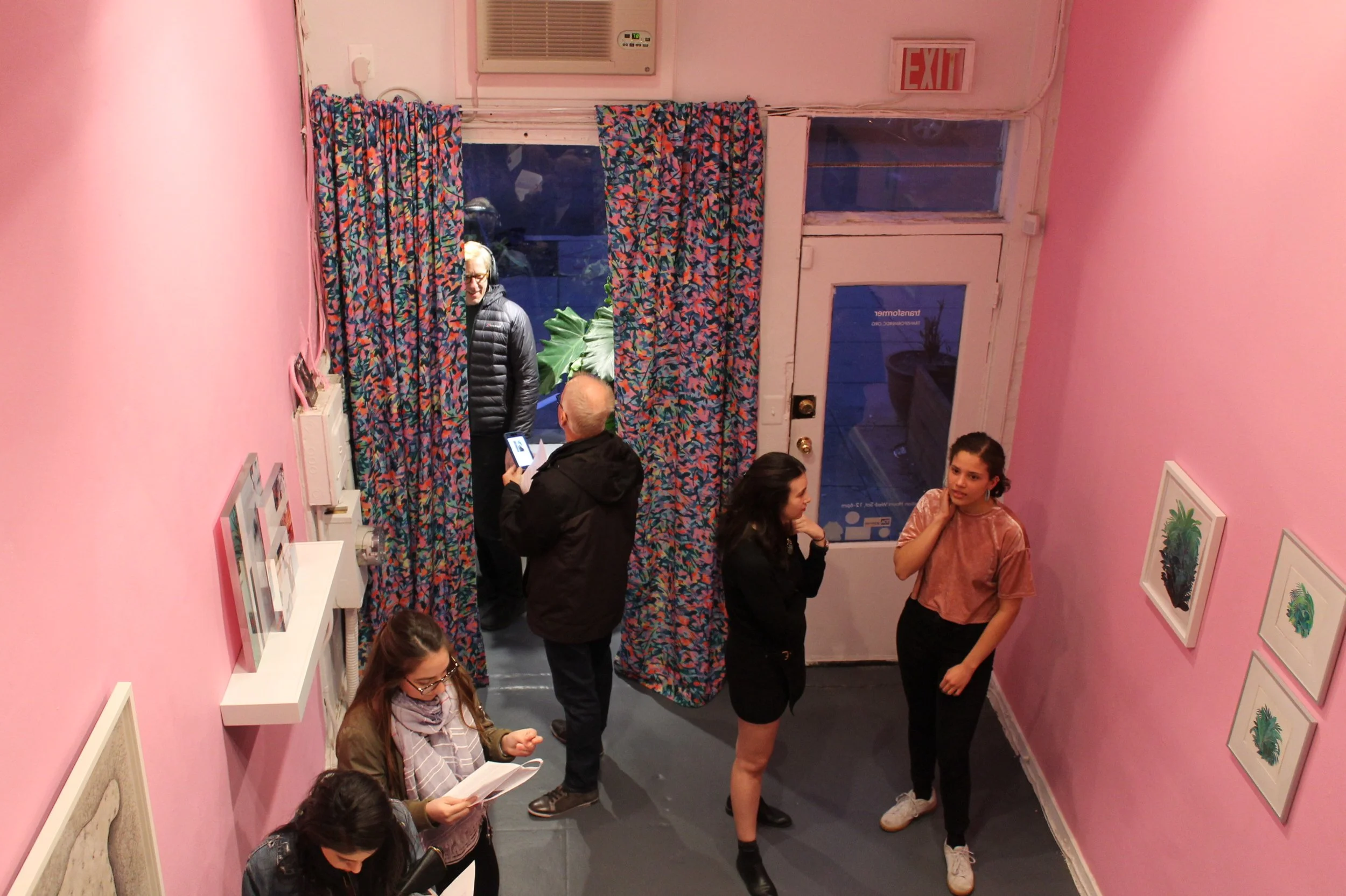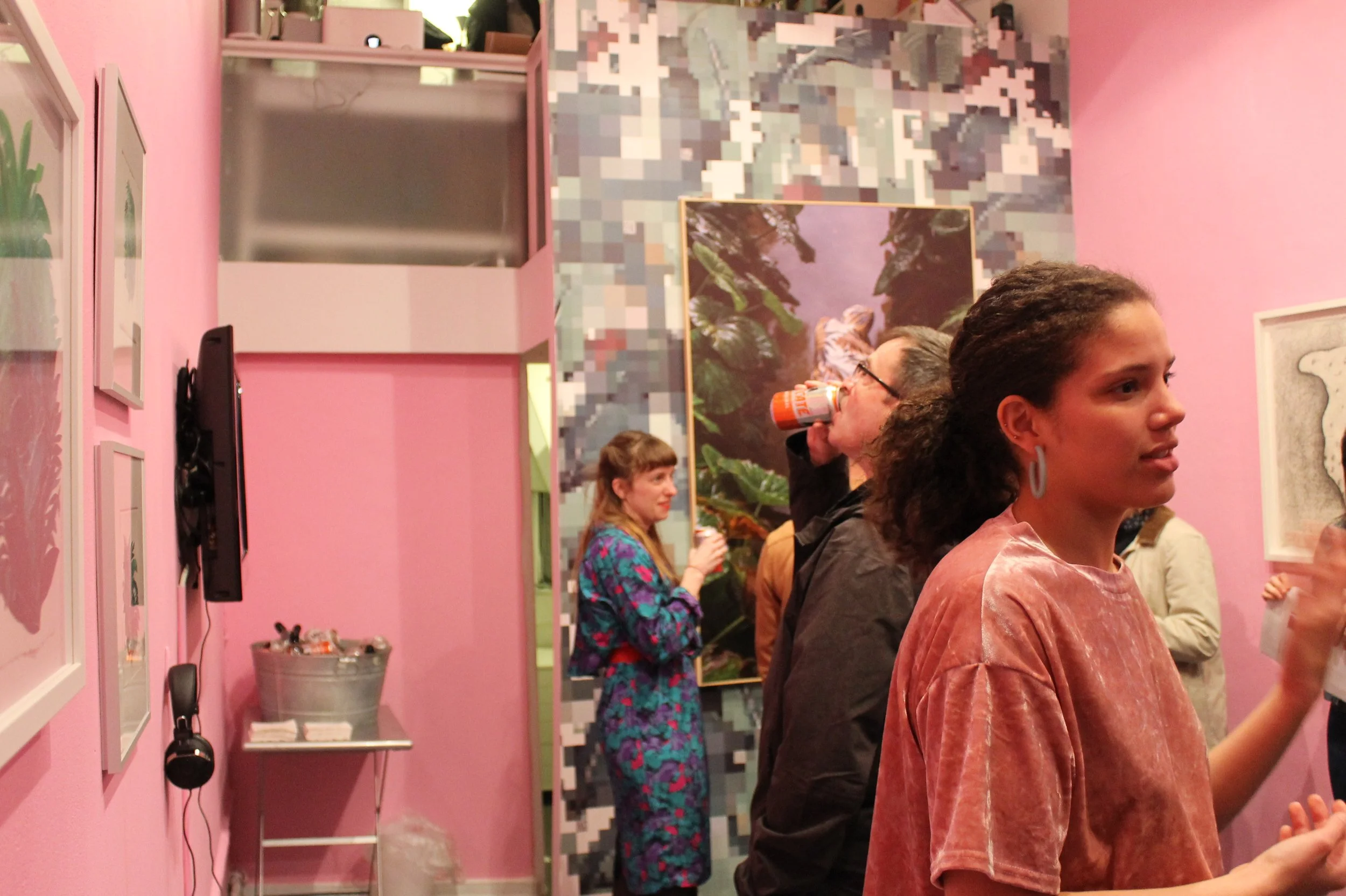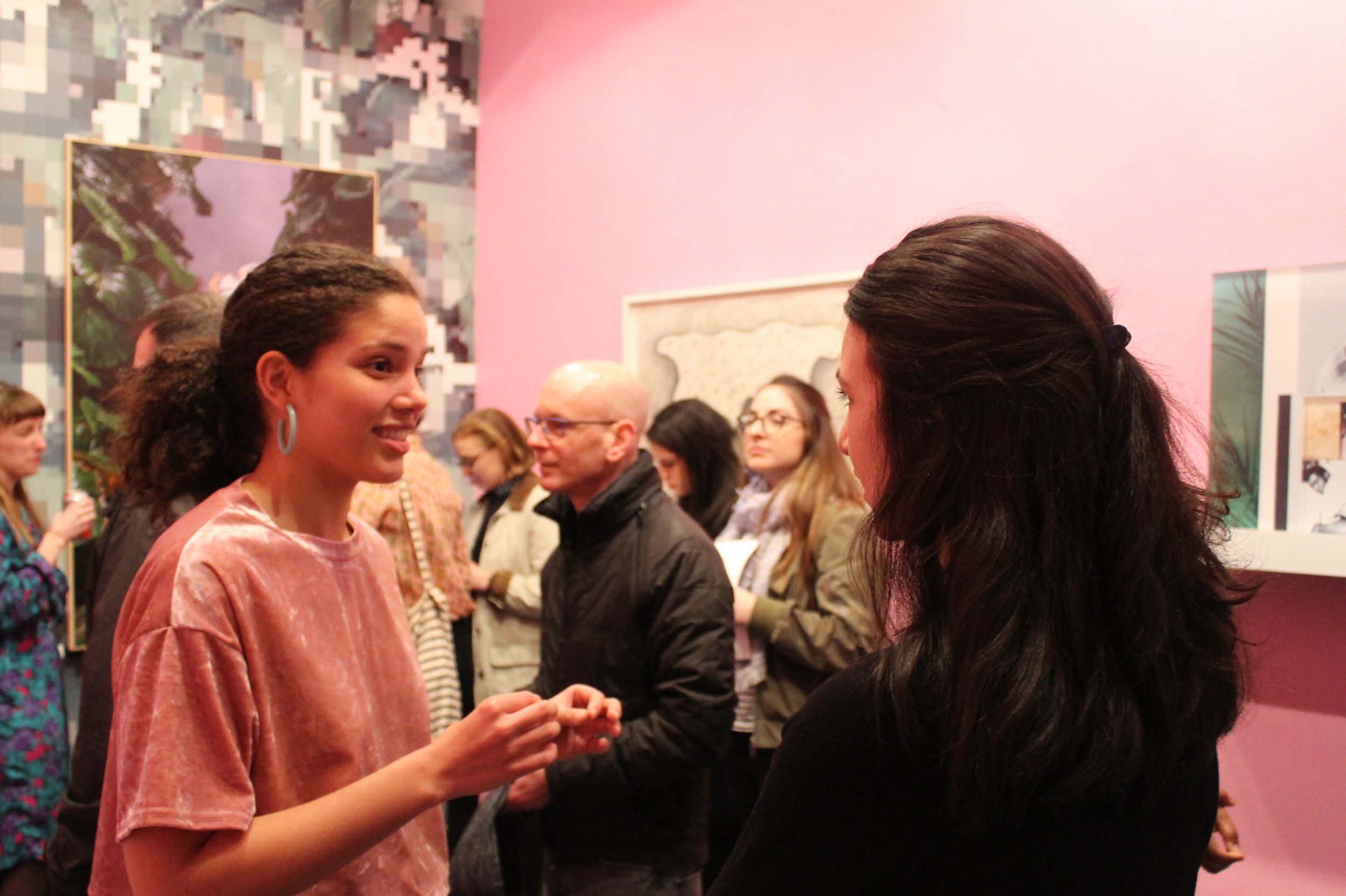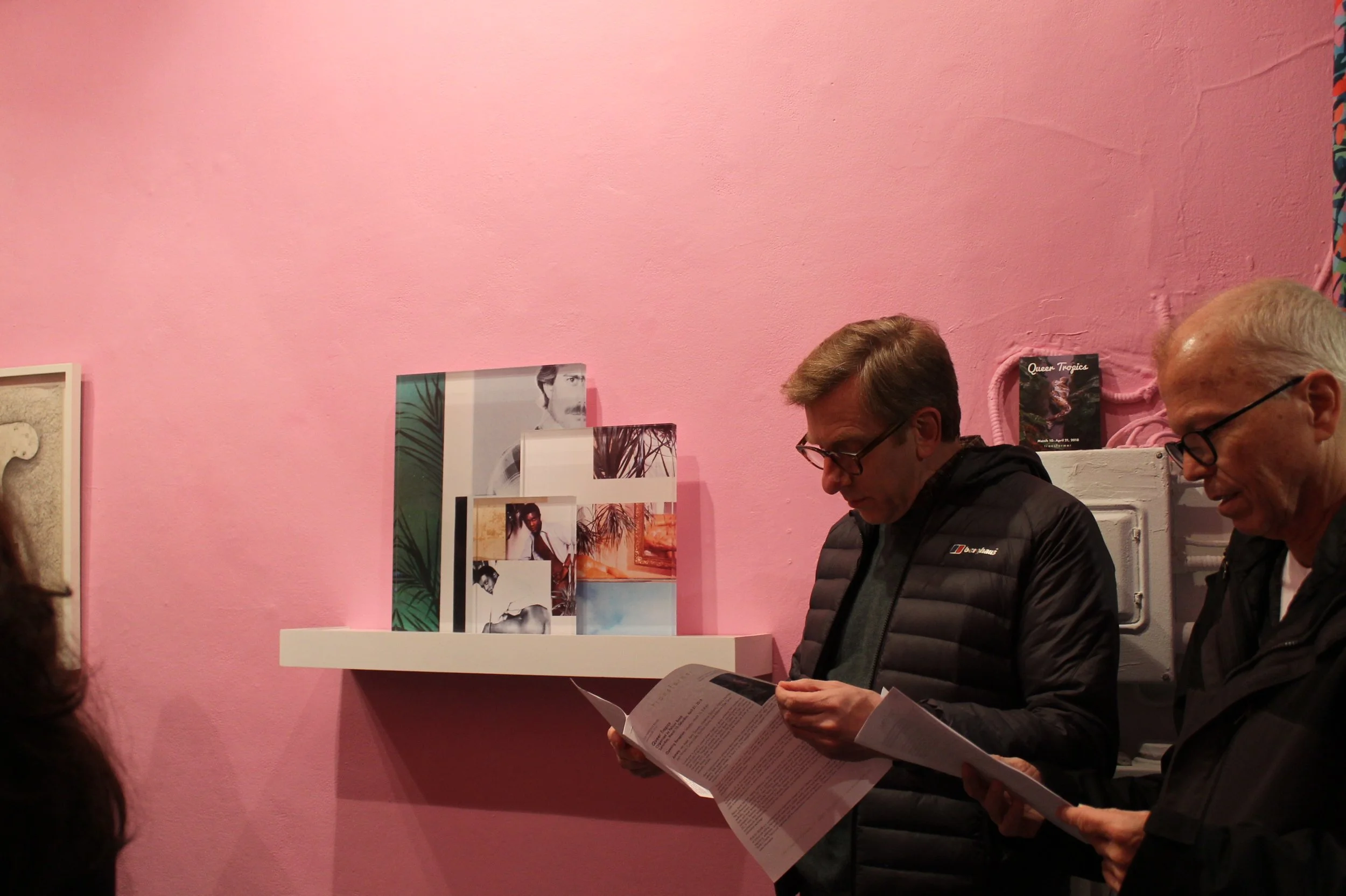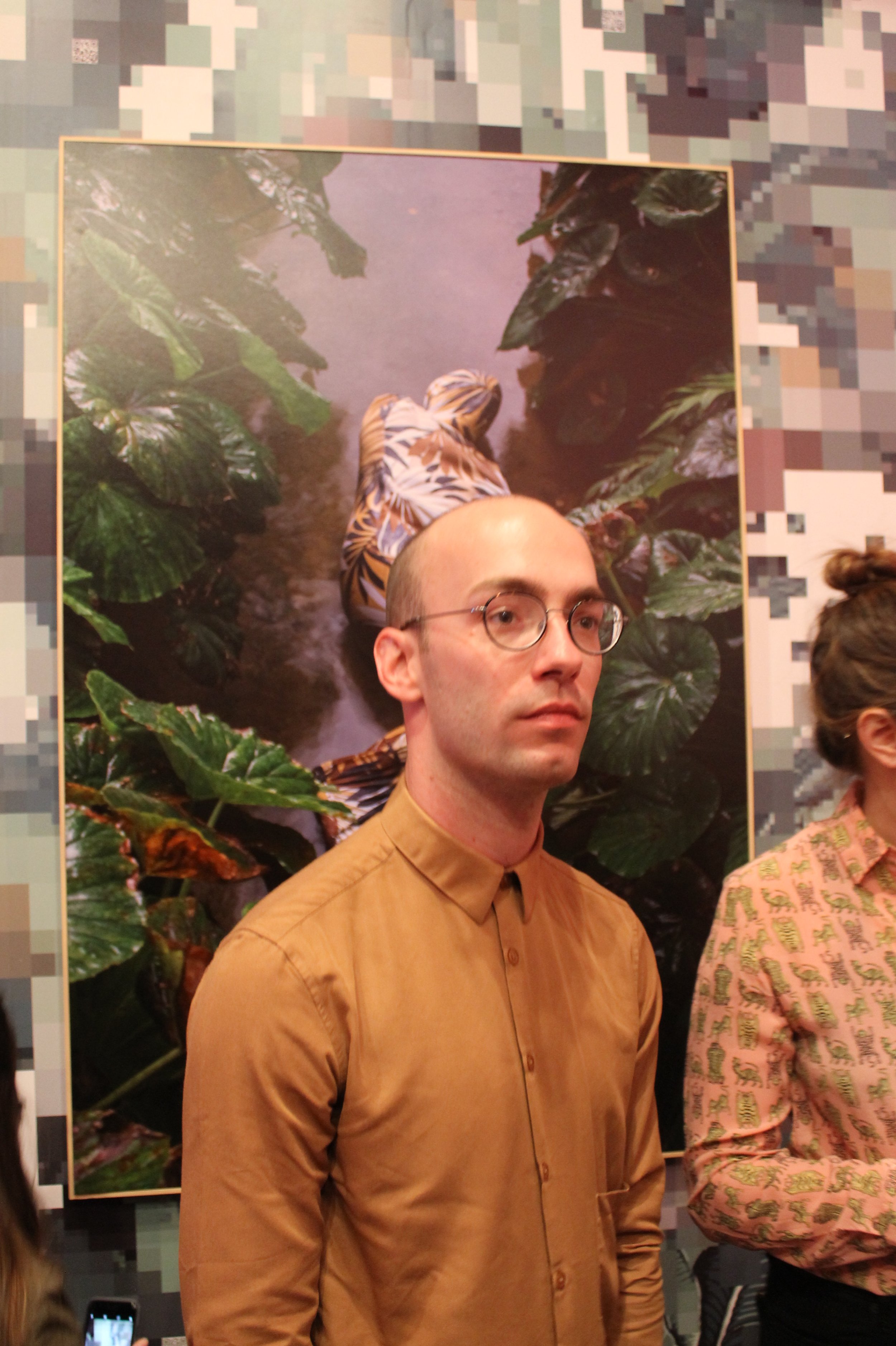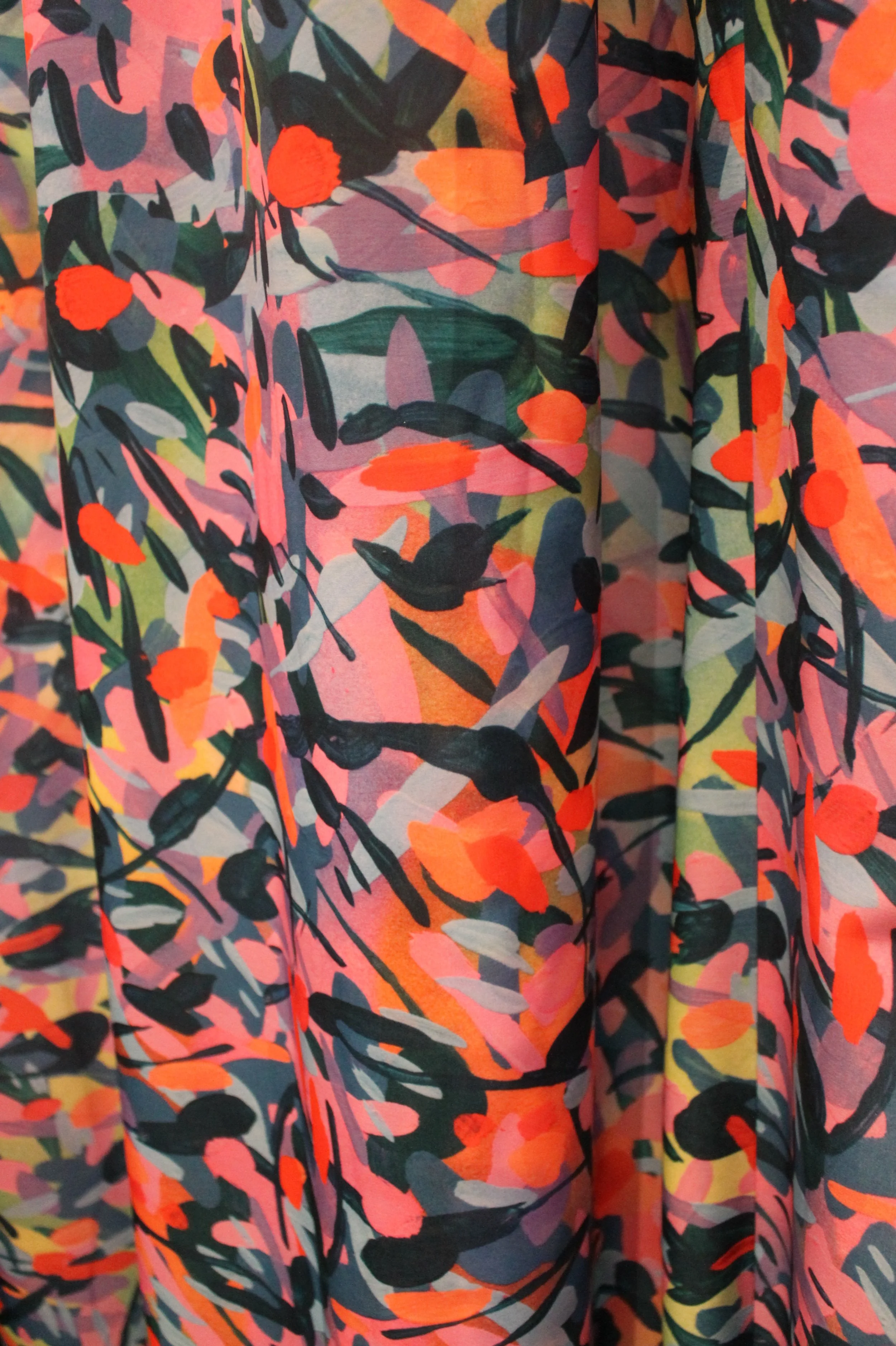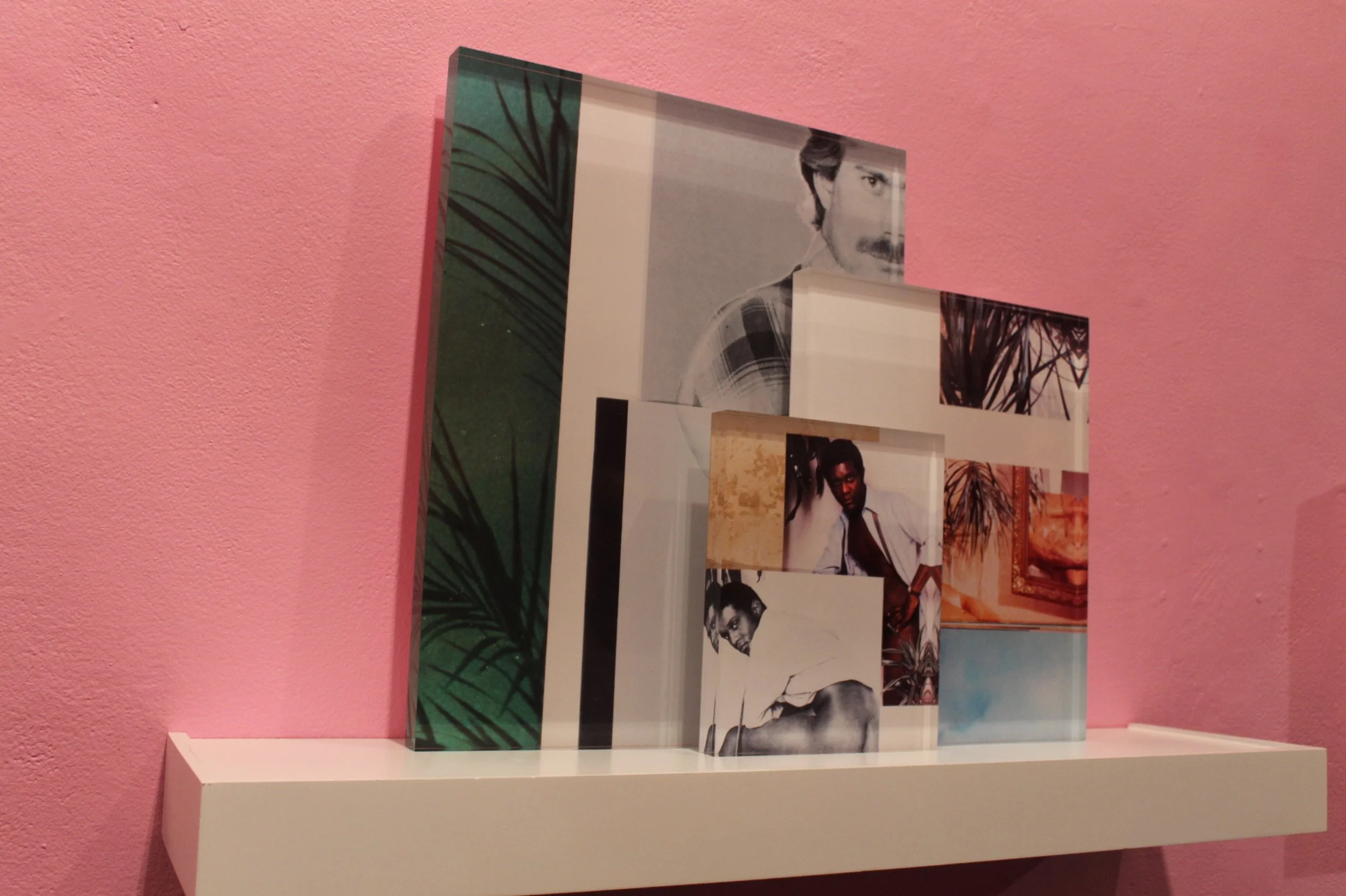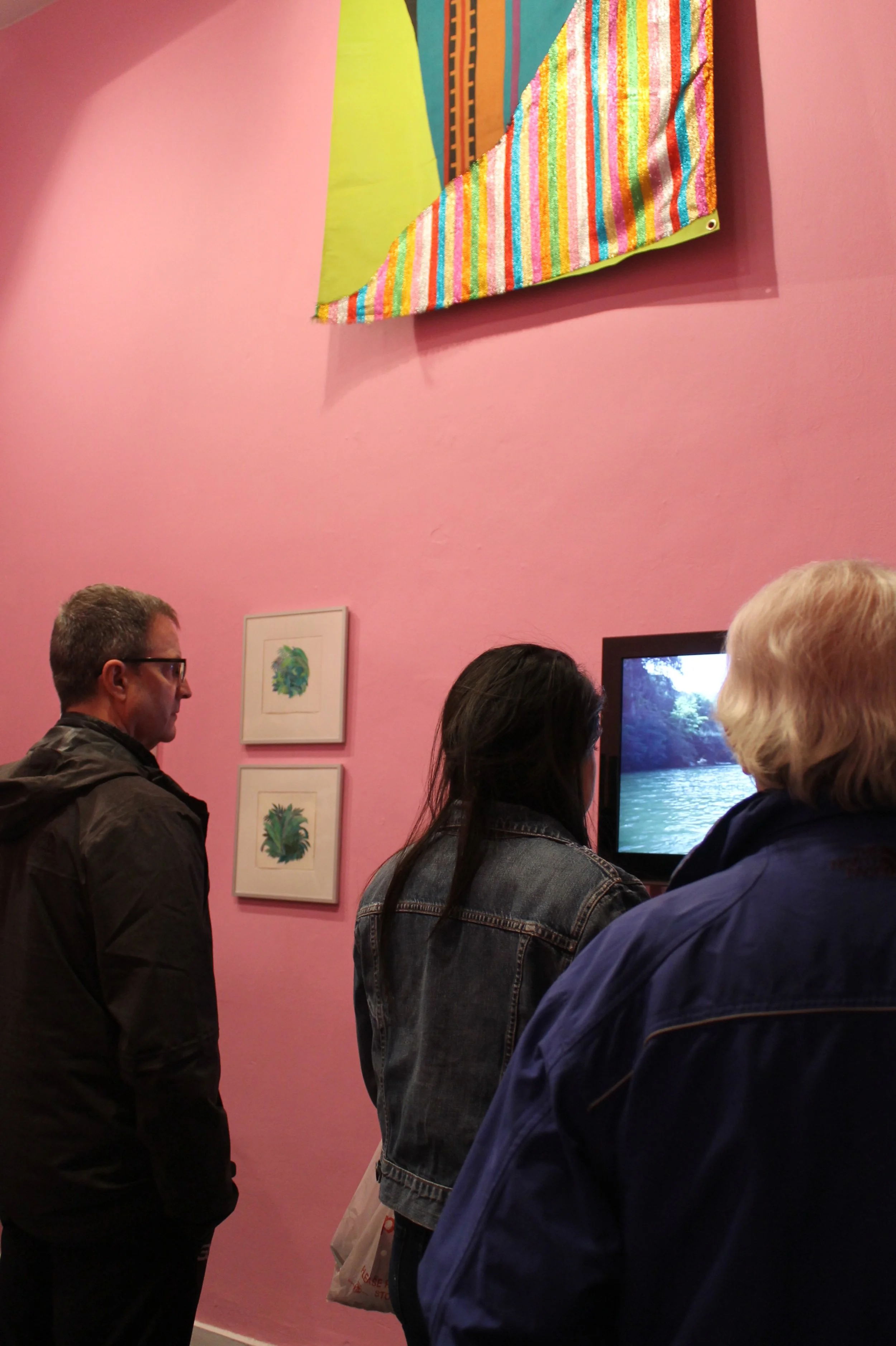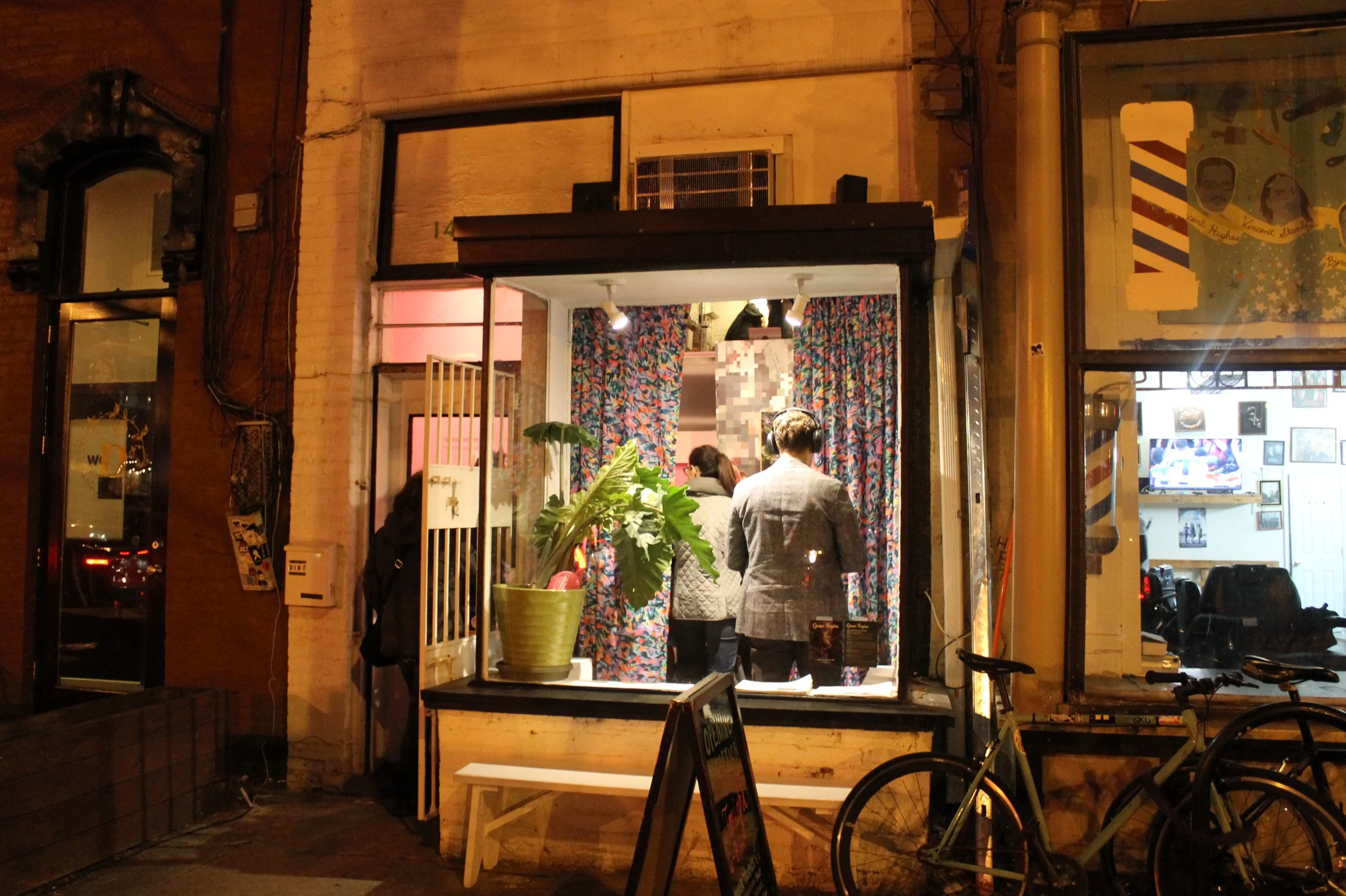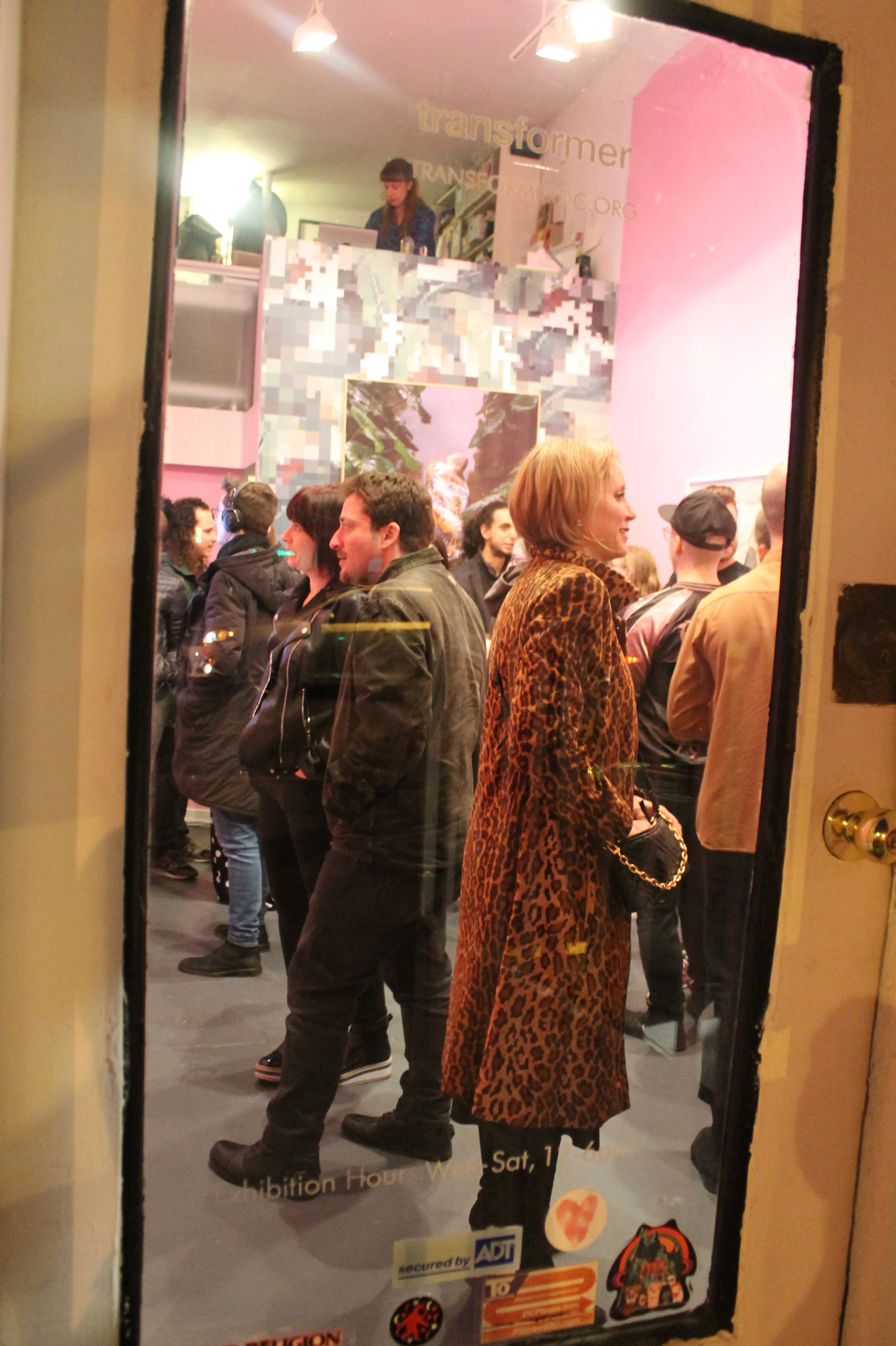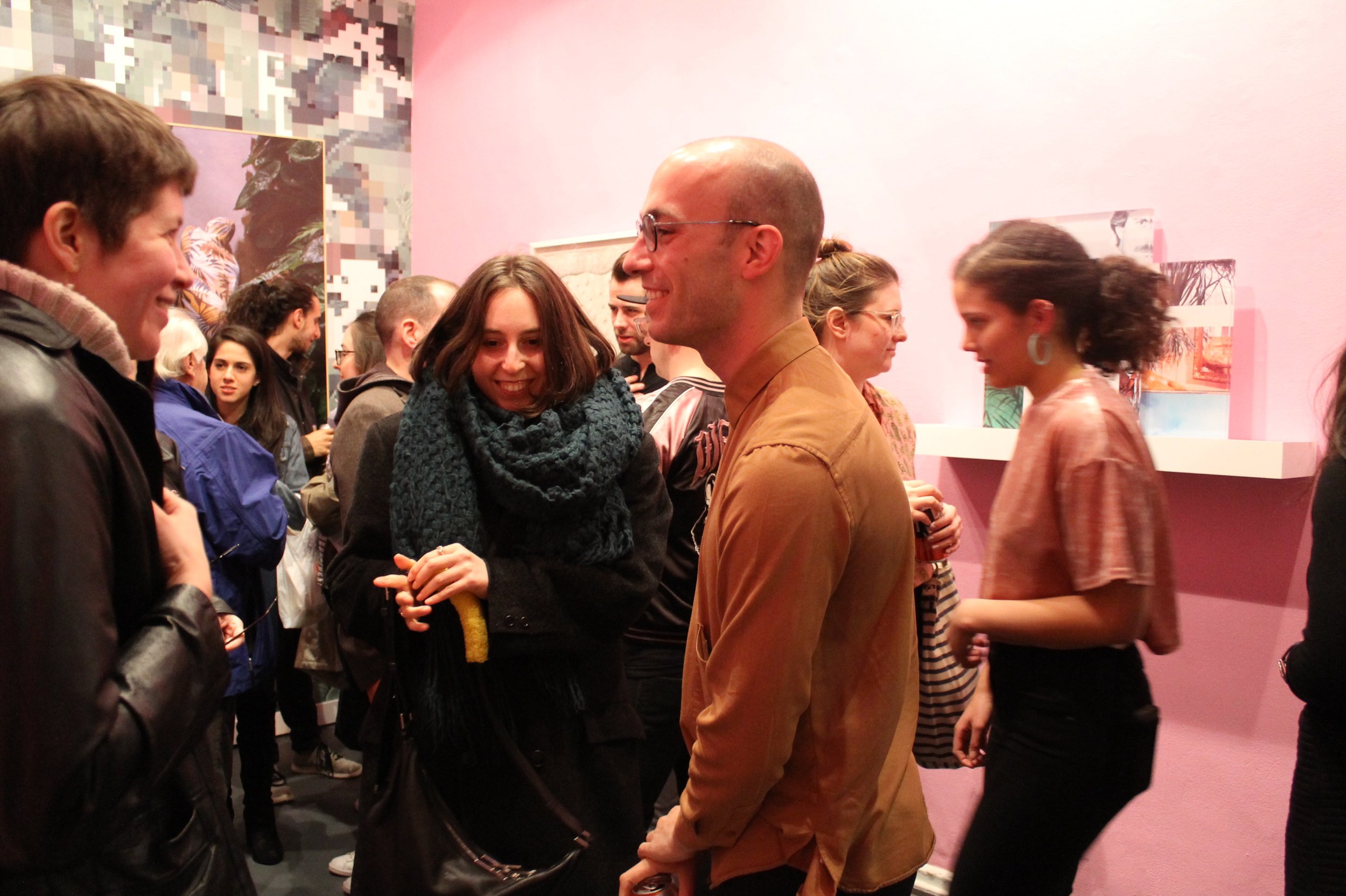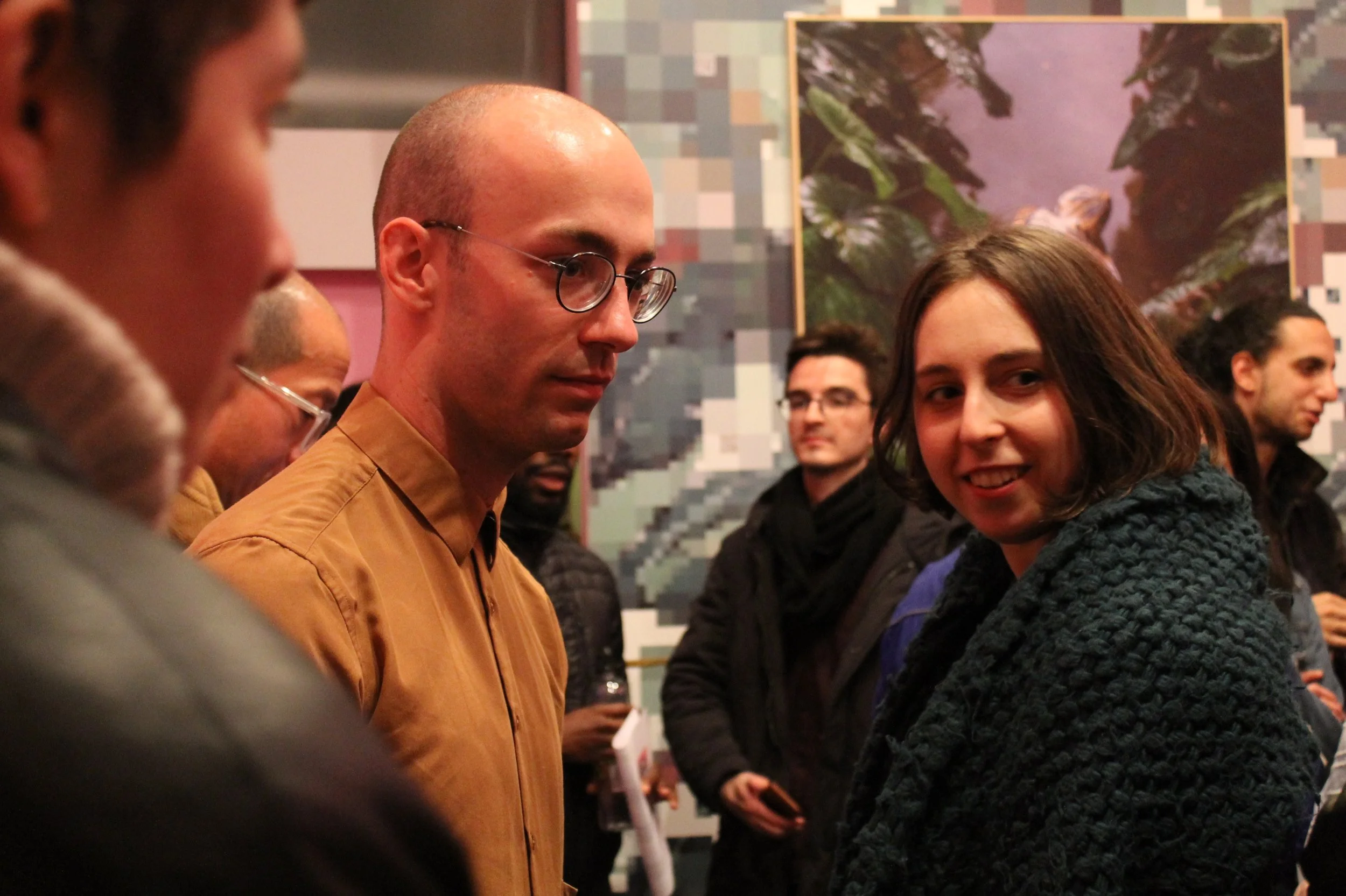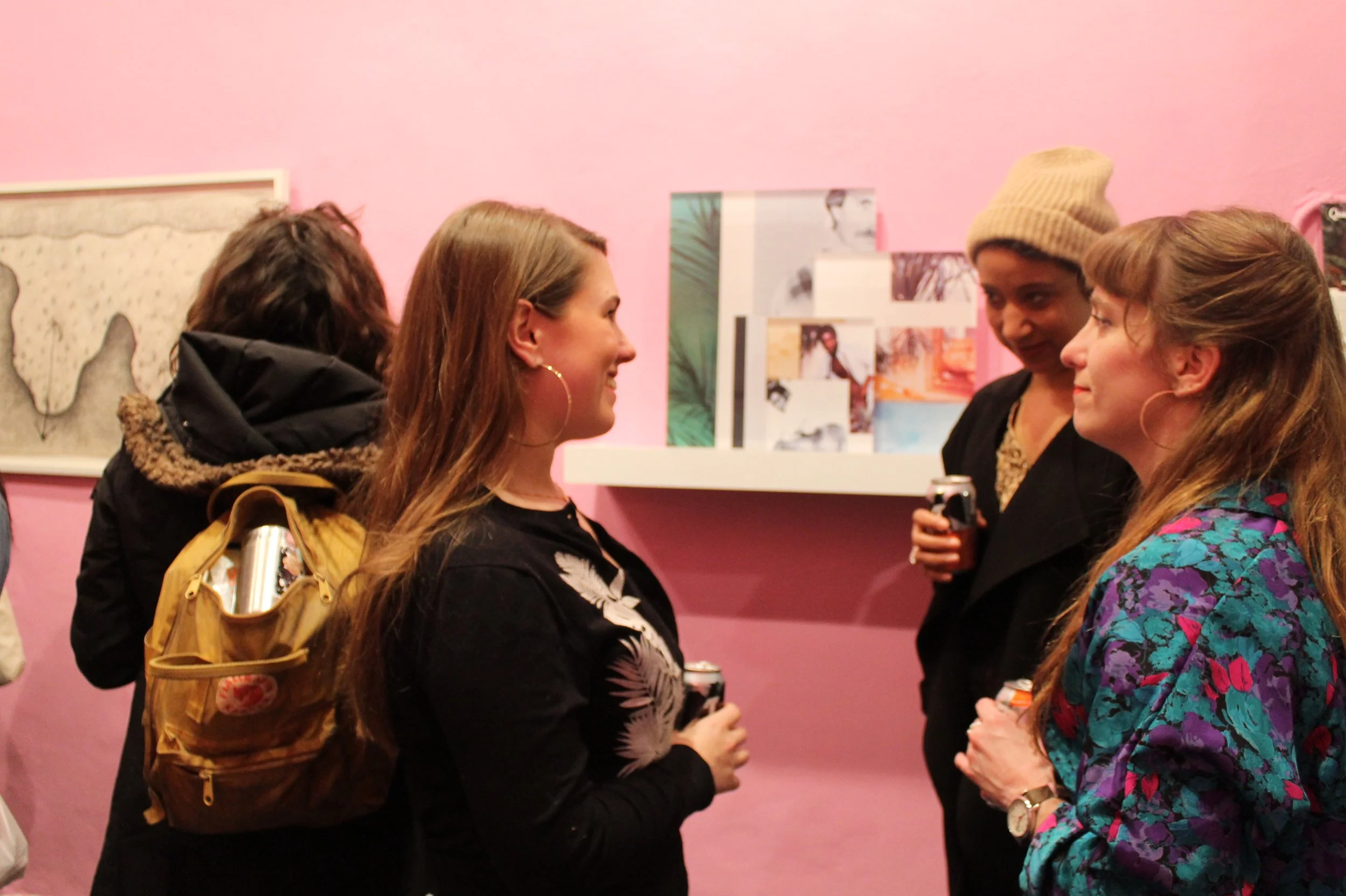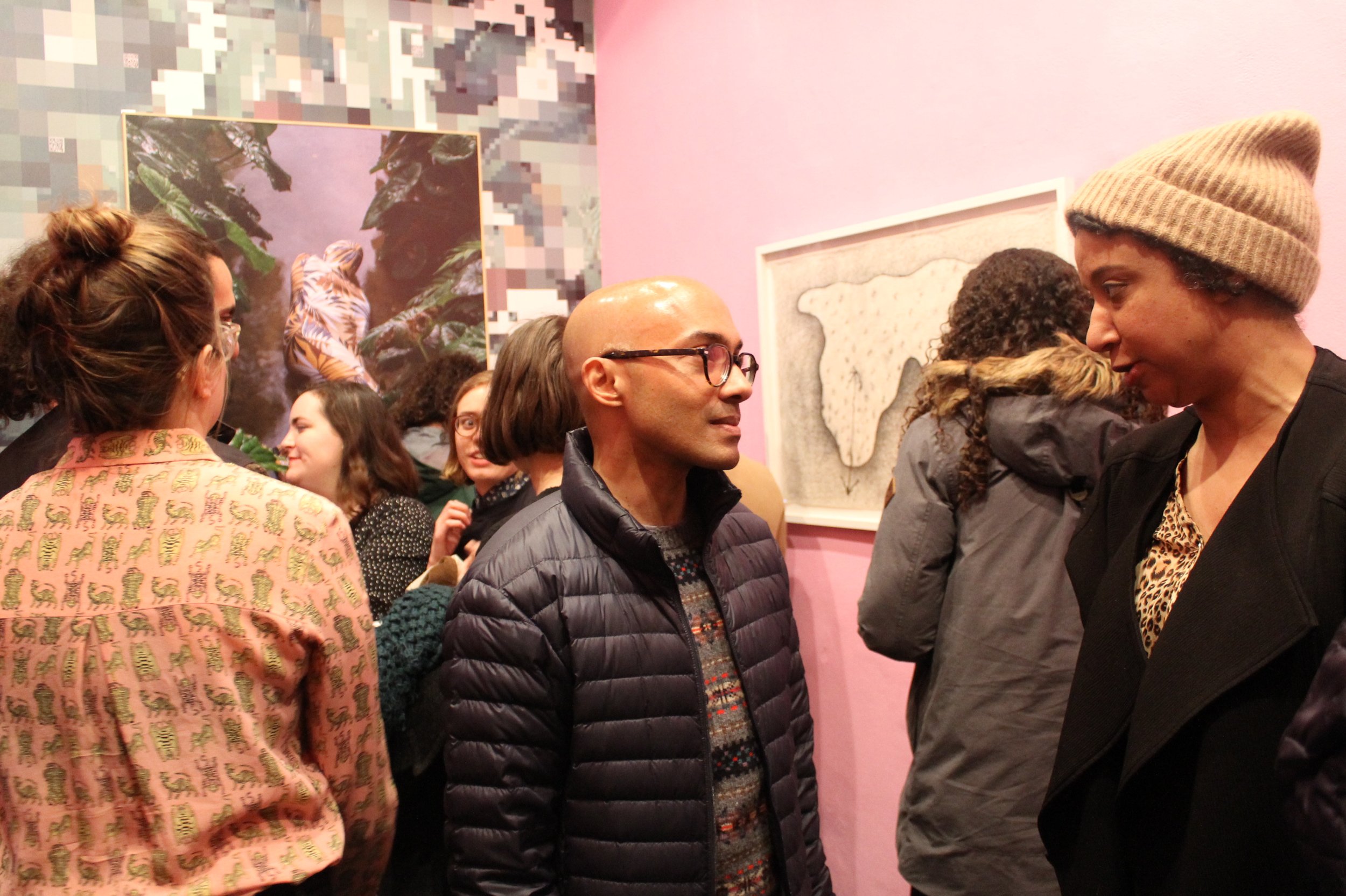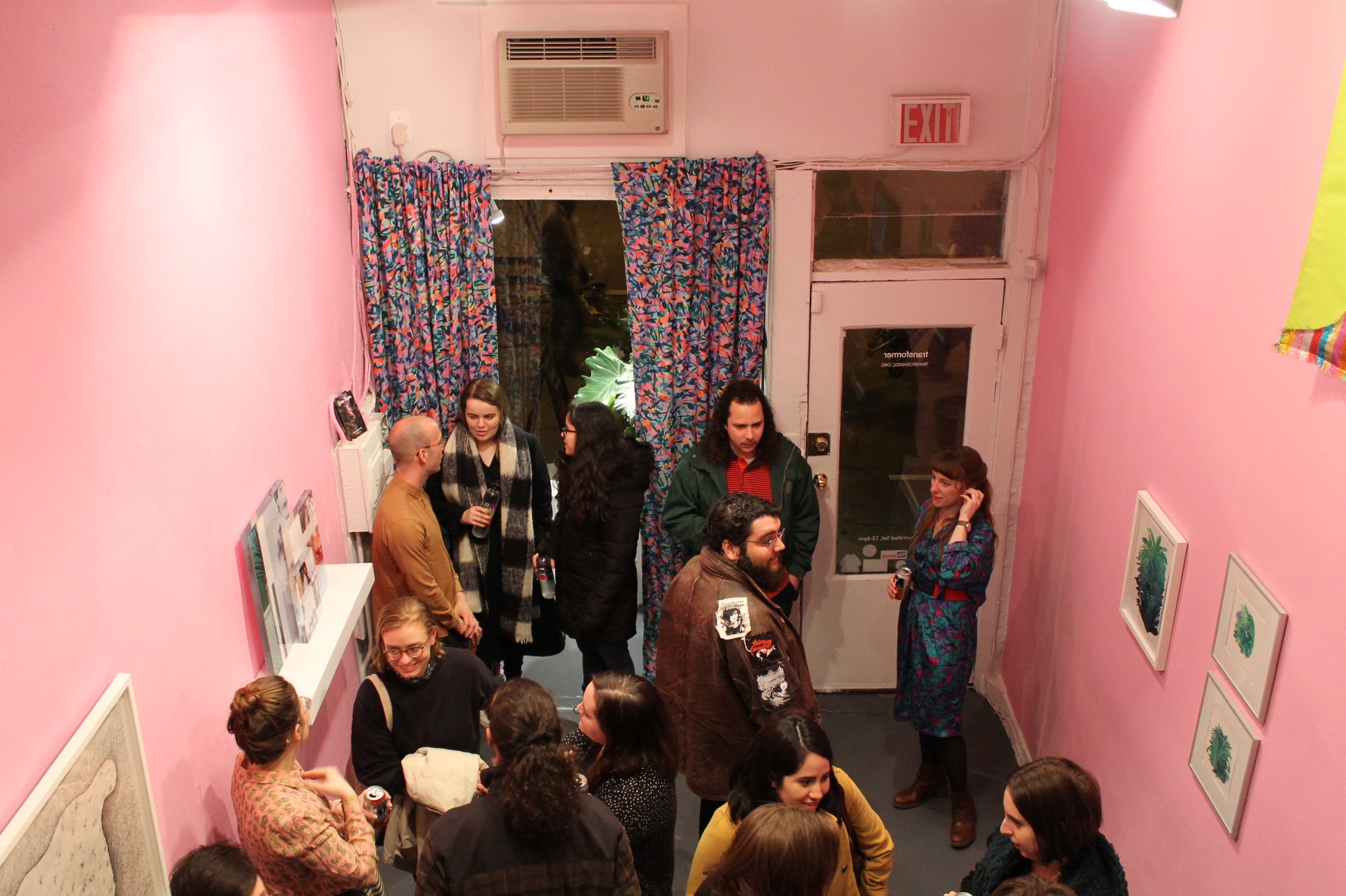Queer Tropics
March 10 – April 21, 2018
Organized by Pelican Bomb
Featuring Artists: Ash Arder, Kerry Downey, Madeline Gallucci, Victoria Martinez, Joiri Minaya, Carlos Motta, Pacifico Silano, and Adrienne Elise Tarver
Opening Reception: Saturday, March 10, 6 – 8 pm
PRESS
"In the galleries: Images in ‘Weather the Storm’ are both reassuring and ominous", Mark Jenkins, The Washington Post
"Queer Tropics: Response", Amanda Jirón-Murphy, The Rib
ABOUT THE EXHIBITION
Transformer presents Queer Tropics, a group exhibition that considers the abstract idea of the tropics and how that vision has been variously created, reinforced, and confronted. Originally presented at Pelican Bomb Gallery X in New Orleans, November 2017, Queer Tropics features artworks that examine the visual and cultural systems through which one imagines the landscape of the tropics as a site of leisure, sensuality, and play.
Queer Tropics proposes an ambiguous space where the viewer can indulge in the visual pleasure of palm trees and colorful patterns while questioning to what ends these images are and have been used. While Queer Tropics considers some specific geographic contexts, its focus is on the intangible and the imagined—contemplating an abstract, yet vivid, conception of the tropics.
Though not all of the artists included in Queer Tropics identify as queer, or produce work directly about queerness, the exhibition considers how landscape, culture, and identity affect the ways in which we conceive of subjecthood and are inflected by a sense of otherness, challenging commonly held notions of how the tropics have been defined through colonialism, history, and popular culture.
In Washington, DC, far from palm-lined streets and white-sand beaches, the dichotomy between workaday life and vacation fantasy is immediately felt. Featuring works by eight artists working in New York, Chicago, Detroit, and Kansas City—with varied relationships to the Global South—Queer Tropics both embraces and blurs this conceptual and literal distance in order to better understand how we relate to place, whether real or imagined.
Pelican Bomb has been making exhibitions in New Orleans since 2013, and that locale, which is often colloquially called “the northernmost Caribbean city,” is a particularly important location from which to reflect on the interconnectedness of aesthetics, tourism, and the body. New Orleans’ geographic position and economic history have made it a gateway for trade and travel between the United States, Europe, and the Global South, and it has long been considered a site for indulgence, hedonism, and no-holds-barred fun. The exhibition’s travel to Transformer’s exhibition space in Washington, DC, in many ways models the movement of people, objects, and ideas critical to the conception of Queer Tropics, while simultaneously demonstrating how small arts organizations can facilitate networks of mutual support, resource-sharing, and information exchange.
In her introduction to An Eye for the Tropics: Tourism, Photography, and Framing the Caribbean Picturesque, Krista Thompson traces the widespread imaging of the Caribbean as a picture-perfect paradise back to the late 19th century, when colonial authorities and hoteliers launched marketing campaigns to rebrand the constellation of island states. In Queer Tropics, Carlos Motta looks even further back, to early encounters between indigenous societies and Spanish and Portuguese colonialists, who began arriving in the soon-to-be-named “Americas” in the 15th century. In the Nefandus Trilogy, 2013, Motta blends oral traditions, historical documents, and fiction to articulate the ways in which colonialism imposed Christian morality, altering native populations’ relationships to sex and sexuality. Likewise, Kerry Downey’s Territories drawings, 2013, simultaneously evoke corporeal forms and the language of cartography to challenge society’s mapping and overdetermination of genderqueer and marginalized bodies, staging a connection between exoticization and eroticism that reappears throughout the exhibition.
In a photograph and a custom-printed wallpaper, Joiri Minaya pushes back against the ways in which language and image are manipulated to exoticize and commodify Latin America and the Caribbean. The artist critiques the use of tropical imagery like verdant foliage, bright white beaches, and vibrant color schemes to characterize places and people as “exotic.” Redecode: a tropical theme is a great way to create a fresh, peaceful, relaxing atmosphere, 2015, appropriates the iconic Martinique Banana Leaf wallpaper at the Beverly Hills Hotel in Los Angeles—transforming the lush pattern into a glitchy, pixelated mess. Similarly, Adrienne Elise Tarver considers the power dynamics of voyeurism and the gaze in collaged works on paper, which explore moments of seduction by and within the landscape.
Experiment Station, 2017, a sound piece by Ash Arder highlights the often violent relationship between humankind and nature—one that has been rendered particularly traumatic for people of color living in the United States. Arder reads from a historical text to embody a failed 1892 competition in New Orleans’ Audubon Park to create a machine that could readily and efficiently strip fibers from the ramie plant, an easily cultivated type of nettle native to eastern Asia that is used for textile production and was introduced to the U.S. in the 19th century. Victoria Martinez’s flag-like works serve as monuments to personal and collective narratives, and they incorporate a wide variety of materials, from thrifted fabric and fake flowers to supermarket advertisements found in Pilsen, the predominantly Mexican neighborhood in Chicago where Martinez grew up and still lives.
Other works on view examine the aesthetics of desire and its commodification, like Pacifico Silano’s plexiglass photo-sculpture Plant Study No. 1, 2017, which presents snippets of gay porn in which nude men are posing and having sex next to potted plants. Madeline Gallucci looks for inspiration in hotel rooms, designs on carpeted bus seats, and the bright colors of popular clothing from the 1980s and ’90s. Embracing these markers of commerce, Gallucci repeats them to an extreme on a custom-designed curtain lining the gallery’s entrance.
PELICAN BOMB is a contemporary arts organization based in New Orleans, Louisiana. Founded in 2011 as a publication of critical arts writing, Pelican Bomb continues to publish weekly reviews and features on its online art review, in addition to organizing exhibitions, public projects, and other interdisciplinary programs. Queer Tropics was conceived by Pelican Bomb’s Charlie Tatum and organized with the organization’s executive director, Cameron Shaw. Visit pelicanbomb.com for more information.


